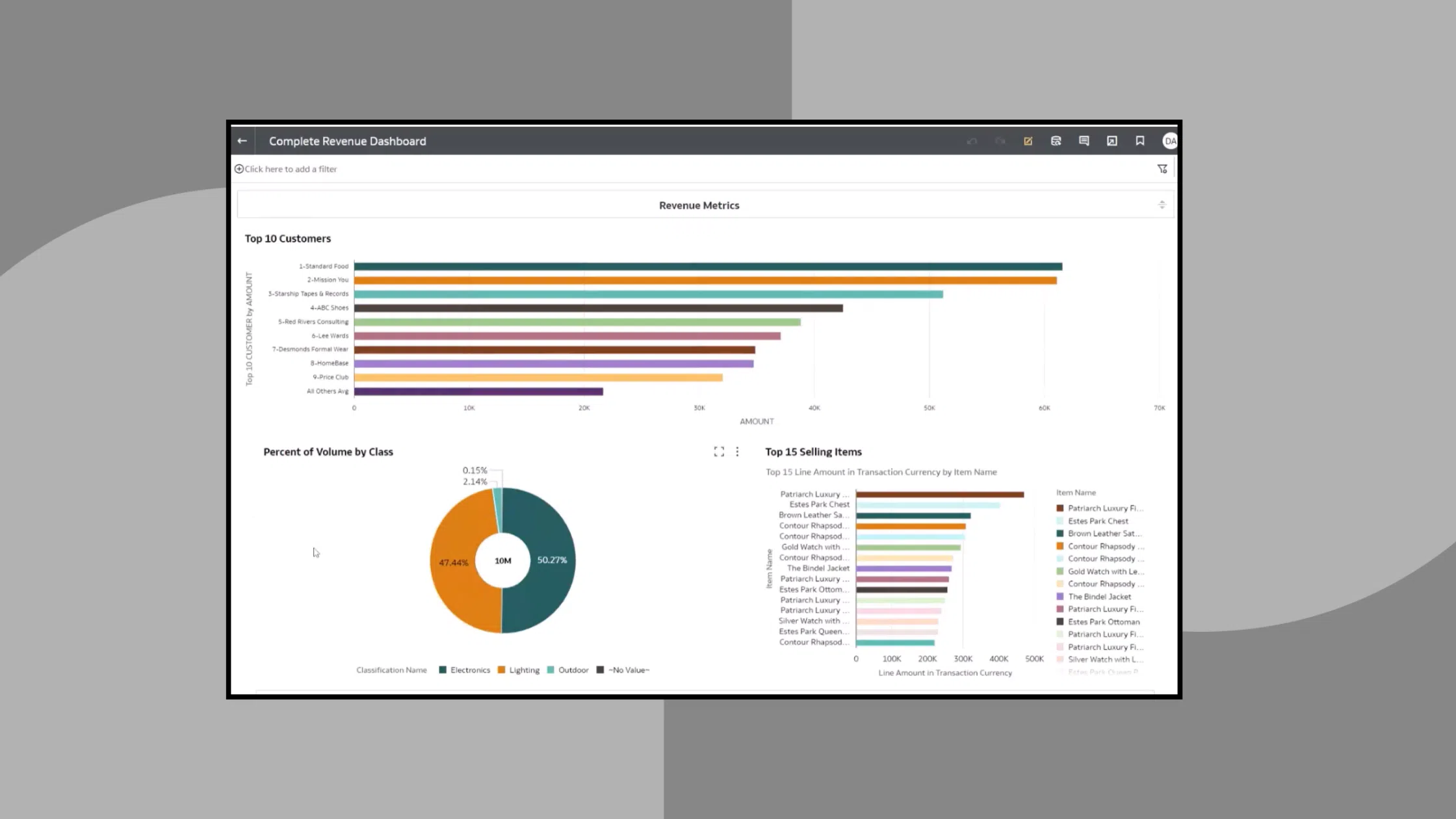Published Feb 2, 2024
What is data synchronization?

Businesses are required to generate and gather large amounts of data between all of their departments. Marketing needs the data, sales needs the data, human resources needs the data, and even the executive team will likely need access to this data. The information and data generated between departments is essential to the organizations operation. It’s used to determines marketing campaigns, internal processes, and if goals are being met. The current landscape creates interdepartmental data silos where each department is using several applications and makes it difficult to share information. This means some departments may be missing information or may be slow to receive data they need from other applications or departments. Transferring data to a centralized repository that is kept up-to-date automatically is key to ensuring an enterprise is agile, consistent, and able to create innovative solutions.
Data synchronization is a process used to achieve this type of organizational cohesion. Data synchronization offers numerous advantages for businesses, especially as data becomes more and more important to the future of enterprise organizations. To understand why, we will explore what data synchronization is, the different types of data synchronization, frequent uses and methods of data synchronization, and the key benefits data synchronization offers businesses.
What is data synchronization and why does it matter?
Data synchronization is a process in which data is consistently updated and maintained across different systems or databases to ensure that each dataset is a true copy of the other. This process is crucial in environments where data is stored in multiple locations or systems, and it’s essential to have up-to-date and accurate information across all platforms.
Data synchronization is a cornerstone of effective iPaaS solutions, enabling businesses to integrate and manage their data landscape more efficiently, accurately, and in real-time.
With an iPaaS, you can sync data for:
- Effective Data Integration: Data and applications can be effectively integration to ensure all data is properly synchronized and accessible to anyone in the organization. This means breaking down data silos and combating SaaS sprawl.
- Real-Time Data Access: With data synchronization through an iPaaS any data is able to be accessed at any time. Important data in an integrated application is available in real-time in connected applications. This reduces the lag time typically existent when attempting to transfer the most up-to-date data.
- Data Consistency Across Platforms: Thanks to the ability for data across integrated application to update in real-time data is consistent across each of the connected applications and platforms. This ensure every person accessing the data from any application is seeing the same data as someone else in the organization accessing it from a different application.
- Scalability and Flexibility: As organizations grow they will generate more and more data. An iPaaS solution can be scaled to meet the needs of organizations as they grow. This includes expanding existing integrations and building new ones.
- Reduced Data Errors and Duplication: Data errors can seriously slow down teams and cause ripples throughout an organization. iPaaS data synchronization reduces data errors by collecting and analyzing data directly from source applications without a third-party manually entering the data. Removing points of contact as the data transfers helps reduce the possibility of errors caused by human error. Additionally, Data synchronization is able to check for and eliminate duplicate data to save space as well as prevent confusion from having different versions of the same data.
- Enhanced Collaboration and Communication: With iPaaS data synchronization data is quickly and automatically transferred between applications. In large organizations this means more teams are able to collaborate and communicate on projects big and small. Projects may require input from multiple teams and departments. Data silos make collaboration and communication difficult and time consuming. With iPaaS data synchronization any connected application can access key data and ensure every team is up-to-date with the newest developments from the project.
- Solves SaaS Sprawl: SaaS sprawl refers to the uncontrolled proliferation of SaaS application within an organization that leads to increased costs, reduced security, and increases in difficulty of data organization. W hile SaaS sprawl can cause problems, it is a natural part of a business growing. What is not normal however is fragmentation. Fragmentation is caused when data and businesses processes become broken across several applications. Data synchronization with an iPaaS helps combat fragmentation and SaaS sprawl by bringing in data from all SaaS application across the organizations and allowing it to be easily accessible. This acts as a single source of truth and helps reduce costs, increase data security, and makes it easier for data to be accessed across organizations.
Types of data synchronization
The main goal of data synchronization is to create a complete, accurate record of data between applications and departments. While this goal itself is straightforward, there are two common ways data synchronization is achieved.
One-way data synchronization
One-way data synchronization is when changes made to the data in a source application are automatically transferred downstream to other applications but are unable to go the other way. These are best used when there is data from a single application that many other applications or individuals need information from quickly and accurately.
One-way data synchronization is a great starting point as it allows multiple applications to receive data changes from a single source. However, this can cause some problems as the data received is limited to that single source. So if an application or department needs information from another application in the stream it may be more difficult to receive due to the nature of one-way data synchronization.
Two-way data synchronization
Two-way data synchronization is when any changes in a connected data ecosystem lead to changes in all other applications whether it’s considered a source, or downstream. Two-way data synchronization creates a truly interconnected web of applications sharing data back and forth.
While one-way data synchronization can be somewhat limited, two-way data synchronization is much more open. Each application can talk to every other application. This is helpful for a lot of reasons, but chief among them is that this allows for true cross-team collaboration through this automated data synchronization. Teams and applications have a constantly updated repository of data which allows them to move forward with projects and campaigns more confidently.
Data synchronization methods
With a basic understanding of what data synchronization is, and the different types that exist, we can explore the different methods through which data synchronization is achieved. The method of data synchronization will have an impact on how data is presented and transferred between applications. While the result is roughly the same, there are small differences that may serve an organization’s purposes better than others.
File synchronization
The first method of data synchronization is called file synchronization. This method of data synchronization copies the data from two or more applications and ensures they all share the same data. It works by gathering data from each application, analyzing it, and then sharing it between each of the applications in the connection. Analyzing the data allows data synchronization to prevent duplicate data from being placed in each application. This all happens automatically and is far more accurate than manually copying and moving each file to a relevant application.
Version control
The second type of data synchronization is called version control. Version control aims to provide data synchronization on files multiple people can edit simultaneously. If multiple departments need access to the same file to edit it based on a project they are all working on, version control ensures the file each department is using is up to date with the most recent edits and information. Version control allows true collaboration between multiple departments with ease.
Distributed file systems
The next type of data synchronization is called a distributed file system. A distributed file system is a system where many devices are always connected to receive the most up-to-date versions of information stored in the file system. These are a great tool when a team uses many different devices, even though the main data repository may be stored in an on-site server or the cloud. It keeps your team going no matter where they are. However, it’s important to know that the devices must always stay connected to the system to receive the updated data.
Mirror computing
Another type of data synchronization is mirror computing. Mirror computing provides different sources with an exact copy of a file or piece of information. This is used most often when backing up data to several locations. However, mirror computing only works as a one-way data synchronization method. The exact copy goes from a main source to a single other location. Mirror computing shares much with iPaaS solutions. Both mirror computing and iPaaS deal with the synchronization of data across different systems. While mirror computing focuses on creating real-time replicas for reliability and availability, iPaaS ensures that data is consistently integrated and updated across various business applications and systems.
Integration Platform as a Service (iPaaS)
Another tool of data synchronization is called an integration platform as a service or iPaaS. While many of these methods are more simple and focus entirely on transferring files and data either to a single place, or between two applications, iPaaS is a little more involved. iPaaS provides a more holistic solution to application integrations and this includes data synchronization. An iPaaS works by connected the API and processes of applications together. This means their processes can be automated and multiple applications can work together to complete a single process. Data synchronization included. iPaaS solutions provide businesses better data accuracy through real-time updates between applications even during a process, and improves operational efficiency by streamlining and automating processes between several apps
Frequent uses of data synchronization
Data synchronization is a powerful tool, but how many different uses does it have? The real answer is it can be used as much as your organization needs it. Data synchronization aims to ensure all data in an organization is accurate and easily accessible. However, there are several common use cases we can discuss to give a feel of the true power of data synchronization.
Syncing employee data
Data synchronization for employee data is a common use case. It helps track employee information such as employment length, team information, and even salary information. New employee information can also be tracked and maintained. As an organization grows, new team members will be added to meet new demands. As the HR systems are updated with their information, it can be easily synchronized between multiple applications.
Customer data
Another key use of data synchronization is maintaining all customer data. Managing customer relationships is incredibly important for the overall health of a business. Each interaction with a customer should be consistent, which is only achievable when customer data is synchronized across the entire organization. This helps the sales team find opportunities without continually bringing up something customers aren’t interested in, and helps marketing create a cohesive strategy that feels personalized to each customer.
Aside from sales opportunities, customer data synchronization is also incredibly important for incidents and escalation. Maintaining a record of incidents involving customers, how they were solved, and if they required escalation is key to making each touch point with a customer consistent. If they are forced to constantly revisit this incident, it can ultimately sour their mood toward an organization.
Business incident management
Finally, data synchronization allows for the easy tracking of any incidents regarding the business and its processes. Many businesses either have their own large supply chains, are part of a large supply chain, or interact with a supply chain at some point. When this many businesses rely on each other to deliver a product promptly, each must be notified as soon as possible if there are incidents or slowdowns. Using an incident management application will help one business keep track of the incident, but other businesses down the chain may be left in the dark. With data synchronization, one organization, or several, can keep track of incidents that may cause slowdowns and plan accordingly
Benefits of data synchronization
Data synchronization aims to connect the data flow of entire organizations. While it is clear data synchronization is a powerful tool, let’s explore some of the benefits businesses will see upon setting up this data solution.
Removes data silos
The most obvious benefit of data synchronization is the complete breakdown of data silos. In large organizations, it’s easy for departments to become disconnected from one another. In many senses, each is like its own separate organization. This can be a problem for collaboration and limit innovation. Data synchronization breaks down these walls and makes it easy for departments to share data quickly and accurately. Data silos act only as roadblocks to collaboration and innovation. Removing them will open up entirely new avenues for teams to work together and create something truly great.
Near-real-time data synchronization
The next key benefit is the ability to update data across an organization in near-real-time. Data synchronization is handled automatically, and as soon as new information is added or edited, the data synchronization system collects the data and distributes it to the relevant applications and departments. This allows teams to make better decisions and steer the business in the right direction. If data synchronization is done slowly, it is likely choices will be made without the most recent data. This means that pivots are more likely, and precious time is lost.
Offers data backups
The data businesses use every day is increasingly important to their organizational efficiency. It steers projects, campaigns, and internal business processes. It can’t be understated how important data is. A worst-case scenario for any business is to lose large chunks of data. No matter how it happens, it feels like being set back to square one. Any projects related to that information have to be nearly restarted, customer information needs to be gathered all over again, and incident tracking is completely lost. Having data backups is so important to avoid something like this happening. Data synchronization is a tool that provides this service. Data synchronization is constantly collecting data and synchronizing between many applications. If the worst happens, and one application is lost due to hardware malfunction, software malfunction, or any other reason, once the application is back up and running, it can be sent the most up-to-date information. When the worst happens, data synchronization helps minimize the impacts on an organization.
Process automation
iPaaS can automate complex business processes involving multiple systems’ data. This means files and data can be created, updated and deleted as needed. Additional processes can be automated through iPaaS data synchronization as well. For example, automating order-to-cash processes that require data synchronization between sales, accounting, and inventory management systems. This includes populating and updated customer purchase information, when they buy a good or service, updating inventory across multiple applications if needed, and sending the customer purchase information as soon as the payment has been processed. Without iPaaS data synchronization each of these processes would need to happen manually, however thanks to application integrations they’re all happened completely automatically.
Scalability and flexibility
SaaS sprawl and data fragmentation can hinder an organizations ability to scale up, and move with agility. When business processes and data are scattered among many applications it creates roadblocks for new teams, new team members, and new and more efficient processes. These roadblocks present unique challenges to growing businesses that cost money and time. iPaaS data synchronization allows businesses to link their applications to help overcome these roadblocks. For one, fragmentation becomes a thing of the past as the data and processes of integrated applications become automated workflows that saves time and synchronizes all data across each application for ease of access. Additionally, iPaaS allows for scalability with hundreds of prebuilt application integrations and templates for over 100,000 more.
Data synchronization is an incredibly powerful process that can help revolutionize how an organization handles its data flows. We’ve seen what data synchronization is, some basic methods, and explored the benefits. All that’s left to do now is for your organization to take the first step into a world of cleaner data management. If you’d like to learn more about iPaaS data synchronization with Celigo, contact us today to schedule a free demo!



